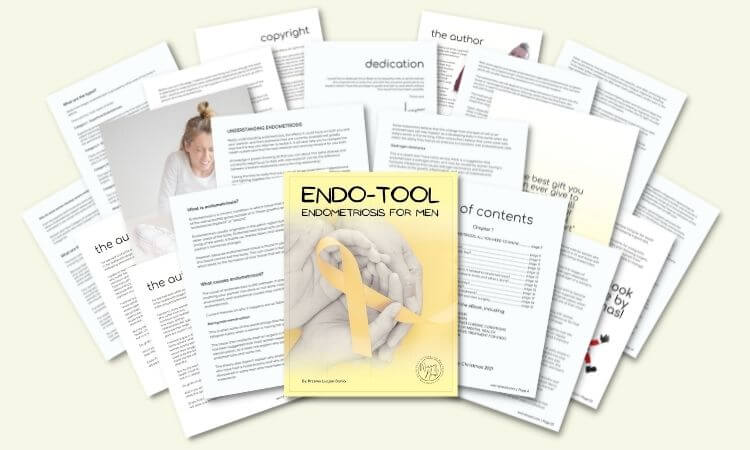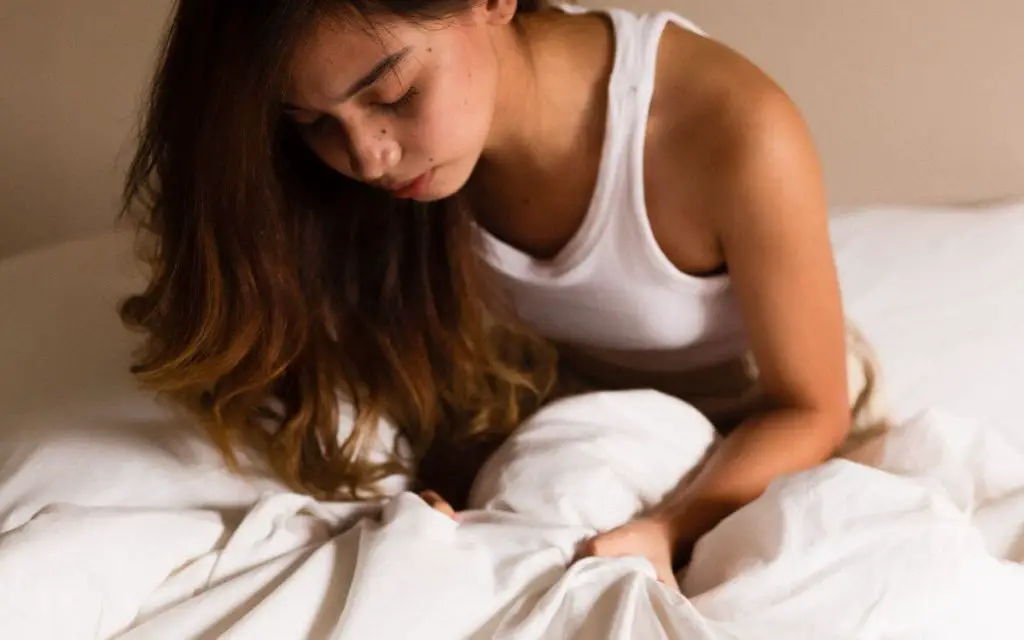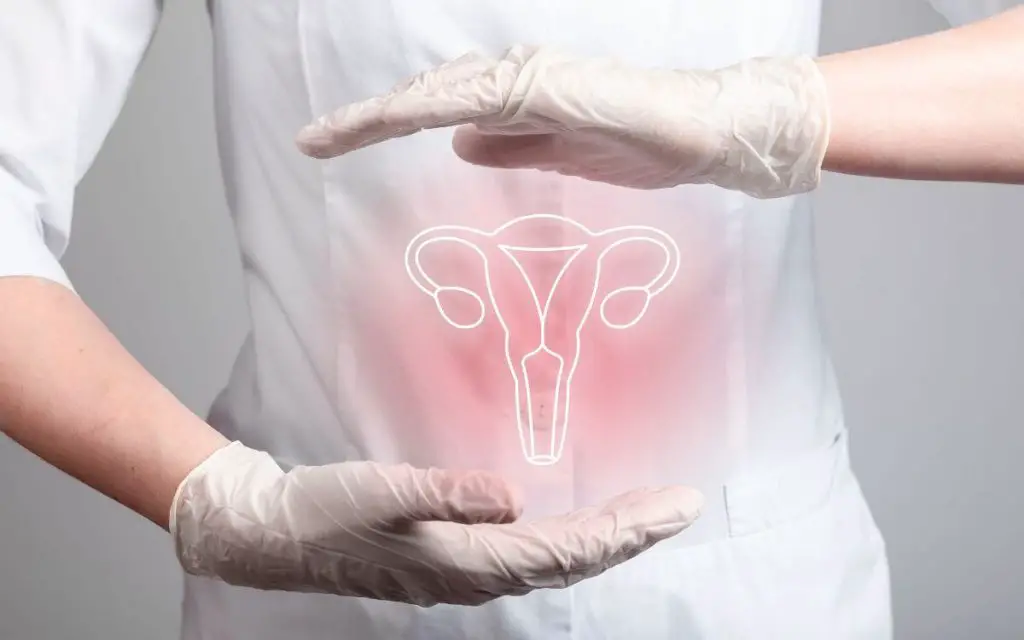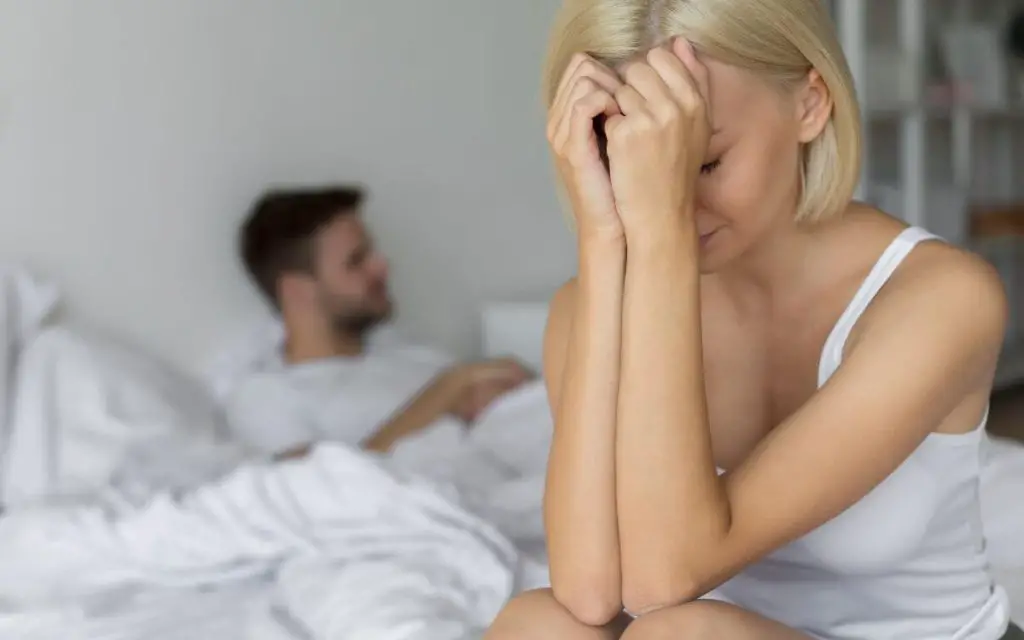Is endometriosis one-sided relationship?
Endometriosis is a condition that affects women, and it’s true that the physical and emotional toll it takes on them is often the focus of discussions around the topic, however, being a partner of someone with this diabolic chronic condition I found a gap in the endometriosis community that needs to be addressed.
It’s important to acknowledge that endometriosis also has a significant impact on the partners of those who suffer from this condition.
In my line of work, as a blogger, I write about endometriosis and fibromyalgia for men because both conditions primarily affect women. I place a lot of focus on men trying to raise awareness and give voice to male partners of chronically ill women.
I also promote endometriosis and fibromyalgia research!
So if you asked me if endometriosis is a one-sided relationship, here’s the answer:
Endometriosis can be perceived as a one-sided relationship because the focus is often on the person with the condition, leaving their partner’s needs and emotions overlooked or forgotten, leading to feelings of frustration, loneliness, and helplessness.
The basics of endometriosis.
In order to understand the topic, I need to briefly outline the basics of endometriosis in order to help those how never heard of this condition understand it better.
There are many myths surrounding endometriosis, which makes it more important to explain it the right way.
So, I will begin with defining endometriosis and what impact this condition has on couples, but if you are already familiar with the basics, feel free to scroll down to the section about the experiences of women with endometriosis.
In the meantime, if you wish to get an all-in-one guide that combines comprehensive medical knowledge with tips on how to cope, support, and find a way into the new normal, I wrote “Endo-Tool: Endometriosis for Men”, an eBook that covers it all.
And to help you get started, I give away the whole 1st chapter for FREE for you to take a look, which includes the following:
- What is endometriosis?
- What are the symptoms?
- What causes endometriosis?
- What does endometriosis look like?
- What are the stages?
- What are the types?
- What is adenomyosis and how is it related to endometriosis?
- Why do some women develop severe endo and others don’t?
- Does endometriosis cause infertility?
- How is endometriosis diagnosed?
- Do types and stages affect medical treatments?
- Recurrence of endometriosis after excision surgery.
FREE Chapter of “Endo-Tool”
Endometriosis e-Book for Men

Defining endometriosis.
Endometriosis occurs in 10% of women. It is a chronic condition in which tissue similar to the lining of the uterus grows outside of it, typically endometriosis involves pelvic organs like the ovaries, fallopian tubes, and tissue lining the pelvis.
Some women have mild endometriosis around their reproductive organs, and others (like my wife) have severe disease.
You cannot prevent endometriosis when left untreated, endometriosis can grow beyond the pelvic cavity, and the scar tissue affects more than pelvic organs such as the lungs, eyes, and even the brain.
The exact cause of endometriosis is not fully understood, but there are several theories.
One theory is retrograde menstruation, where menstrual blood containing endometrial cells flows backward through the fallopian tubes into the pelvic cavity instead of out of the body. That leads to the implantation of endometrial cells and the growth of endometrial tissue in abnormal locations when the menstrual blood cannot escape during the menstrual cycle.
Another theory suggests that endometrial cells may be transported during the menstrual cycle to other parts of the body through the bloodstream or lymphatic system.
There is also a genetic theory with the NSPR1 gene being involved, and that endometriosis is an autoimmune disease.
The impact of endometriosis on relationships.
Endometriosis vary from person to person and can cause none, mild pain, or severe pain, but can have a significant impact on relationships, especially intimate ones. Here are some ways in which endometriosis can affect relationships:
- Pelvic pain and discomfort.
- Emotional distress.
- Fertility problems.
- Financial strain.
- Changes in roles and responsibilities.
Endometriosis often causes pelvic pain and discomfort, particularly menstrual pain during the menstrual cycle and during sexual intercourse. This can make it difficult for women with endometriosis to engage in sexual activity or even to cuddle with their partners.
Trying to diagnose endometriosis takes time, and the physical symptoms of endometriosis can also lead to emotional distress, such as anxiety, depression, and mood swings. This can affect the woman’s relationships with her partner, friends, and family.
My wife used to be on nonsteroidal anti-inflammatory drugs, but today, not being able to get the typical pain relief or hormone treatment, she developed general anxiety, sporadic panic attacks, obsessive-compulsive disorder (OCD), and depression. She also has suicidal thoughts when things become overwhelming.
The only way to improve her endometriosis symptoms, her BSGE specialists need to remove endometriosis tissue from her ovarian cyst so it can function well again, but also the rest of the endometrial tissue.
Endometriosis tissue can block fallopian tubes and the scar tissue can cause infertility or make it more difficult for women to conceive. This can be a major source of stress for couples who are trying to start a family.
Luckily for us, even though we weren’t blessed with kids, I never made my wife feel guilty about it.
The cost of treating endometriosis can be significant, particularly if surgery or fertility treatments are required. This can put a strain on the couple’s finances and add to the stress of the condition.
Endometriosis diagnosis takes time, clinical diagnosis includes a pelvic exam, MRI, and surgery, however, I know that a pelvic exam or MRI doesn’t always reveal endometriosis.

The experience of women with endometriosis.
What I found with my wife is that she can deal with severe pain and discomfort. She has learned how to cope with the physical symptoms of endometriosis, however, when it comes to the chronic fatigue that follows her painful periods, things often escalate.
She becomes increasingly anxious and depressed, and her OCD takes control of her more than usual.
The physical and emotional toll of endometriosis can vary from person to person, however, most women experience endometriosis pain, fatigue, anxiety, and depression. Some women become infertile.
One of the most common symptoms of endometriosis is pelvic pain, particularly during the menstrual cycle and sexual intercourse. This pain can be extremely debilitating.
What usually follows is fatigue. Endometriosis can cause fatigue and exhaustion, which can make it difficult for women to keep up with their daily responsibilities and activities. This is very true for my wife, as her chronic fatigue makes her feel depressed and suicidal.
The fatigue, along with continuous chronic pain and other symptoms, can lead to anxiety and depression. This can further impact a woman’s quality of life.
Some women become infertile when endometrial tissue (tissue similar to the uterine lining) grows in the fallopian tubes or creates ovarian cysts. Endometriosis can cause infertility or at least make it more difficult for women to conceive. This can be a major source of stress and emotional distress.
In addition to the physical and emotional toll of endometriosis, women may also face stigma and a lack of understanding from others. Endometriosis is often dismissed as “just bad cramps” or “normal menstrual pain,” which can be frustrating and invalidating for women who are suffering.
Such a lack of understanding can also make it difficult for women to receive appropriate care and support.
The role of male partners.
Male partners can play a crucial role in supporting women who have endometriosis. Here are some ways in which male partners can be supportive:
- Emotional support.
- Practical support.
- Advocacy.
Women with endometriosis often experience physical and emotional distress, so having a supportive partner makes a big difference.
I’ve learned that simply being there to listen and provide emotional support can help women to cope with the challenges of living with endometriosis.
As I already mentioned, endometriosis can impact a woman’s ability to carry out everyday activities. As male partners, we can provide them with practical support, such as helping with household chores or running errands like shopping, to help alleviate some of the burdens they face.
We can help to advocate for women’s needs when interacting with medical professionals or others (such as her boss or friends) who may not understand the impact of endometriosis.
I accompany all my wife’s medical appointments, I even organized a meeting with her boss to discuss the possibility of adjustments at work. Since then, she fully works from home, which helps her better cope with fatigue, pain, and other endometrial symptoms.

One-sided relationships and endometriosis.
For many men, including me, it is understandable to feel concerned about being judged by society or women when approaching the subject of endometriosis as a male partner. But it is also important to remember that endometriosis affects not only them but also those around them, especially their partners.
I understand that I will NEVER be able to understand what my wife is going through, but I do acknowledge the experiences and perspectives of women who have endometriosis. This is why I dedicated my life to educating myself about the condition and listening to my wife’s experiences and concerns.
I also urge men who never educated themselves about the topic to avoid being dismissive or spreading insensitive comments.
It’s extremely important to communicate openly and honestly with your partner about how her endo affects you as a couple. This can include discussing the physical and emotional toll of the condition, as well as your own feelings and needs as her partner.
It’s important to seek out support from trusted friends, family members, or professionals if you are feeling overwhelmed or struggling to cope with the impact of endometriosis on your relationship.
Seeking support does not make you weak or less of a man, but rather demonstrates your love, care, and commitment to your partner’s well-being, and your willingness to work together to manage the challenges of endometriosis as a couple.
How endometriosis can lead to one-sided relationships.
As male partners of women with endometriosis, we often experience feelings of helplessness, loneliness, frustration, and worry as we try to support our women through painful symptoms, medical appointments, and treatments.
We may also take on additional responsibilities at home or work to help accommodate our partner’s needs during times when they are unable to function normally.
Endometriosis has a profound impact on our partner’s mental health, and the mood swings we often encounter make us freeze not knowing how to respond to them.
Most men can barely spell the word, let alone understand endometriosis. We weren’t given a blueprint on how to cope with our own struggles, feelings, and challenges that come with caring for a woman with a chronic condition like endo.
Additionally, endometriosis has a significant impact on a sexual relationship, as pain during intercourse or other symptoms may make intimacy difficult or even impossible. This creates additional stress and strain on the couples.

The emotional toll on male partners.
While endometriosis seems on the surface that is primarily a women’s health issue, it is important to recognize that it can have a significant impact on the men in their lives as well.
If we acknowledge and discuss the challenges faced by both partners, couples can work together to navigate through the difficulties of the new normal and will maintain a healthy and supportive relationship.
It is important because male partners of women with endometriosis can experience a range of emotions in response to their partner’s condition. Some of the common emotional responses include:
- Frustration.
- Helplessness.
- Guilt.
- Anxiety.
- Depression.
Men can feel frustrated by their inability to alleviate their partner’s pain and discomfort because managing endometriosis is hard. They may feel helpless and unable to support their partners effectively due to the unpredictable and sometimes severe symptoms of endometriosis.
Male partners may feel guilty for not being able to “fix” their partner’s endometriosis or for experiencing their own emotional struggles as a result of the condition.
They may experience anxiety due to the uncertainty and unpredictability of endometriosis symptoms and their impact on their partner’s well-being, but also may experience depression as a result of the ongoing stress and emotional strain associated with their ongoing support.
These emotional responses can impact the relationship, but it is important for both partners to communicate openly and empathetically about their experiences and to seek support and resources when needed.
Coping strategies for male partners.
I am going to keep it short by giving you 3 most effective coping strategies that I found most helpful, they are:
- Self-care and support for male partners.
- Seeking outside resources and support.
- Balancing support with self-care and boundaries.
Self-care and support for male partners.
Men need to prioritize their own physical and emotional health. This includes taking care of their own needs, such as exercise, sleep, and healthy eating, or even visiting a therapist to process their feelings and experiences related to supporting their partner with endometriosis.
Seeking outside resources and support.
Men may benefit from seeking out outside resources and support, such as support groups or online forums for partners of people with endometriosis. These are rare, but you can always read this very blog.
Balancing support with self-care and boundaries.
It is equally important to set boundaries and prioritize your own needs. Set boundaries around your caregiving responsibilities and seek out additional help when needed. Your health matter!

Improving communication and connection.
I split improving communication into 3 sections:
- The importance of open and honest communication.
- Strategies for improving communication in one-sided relationships.
- The role of therapy and counseling.
The importance of open and honest communication.
If you aren’t honest about how you feel, you will never sort it out. Your partner will always take priority, but you need to speak about how you feel not to burn out or reach compassion fatigue.
In the context of endometriosis, you need to communicate your feelings and experiences to your partner in a non-judgmental and supportive way.
Strategies for improving communication in one-sided relationships.
Include active listening, express emotions using “I” statements, and set aside dedicated time for open and honest communication. Active listening involves paying attention to what the other person is saying, reflecting back on what was heard and asking clarifying questions. “I” statements are a way to express emotions in a non-judgmental way, such as “I feel hurt when I am not able to express my feelings.”
The role of therapy and counseling.
Therapy can be helpful for improving communication and connection. Couples therapy can provide a safe space for both partners to express their emotions and work through challenges related to endometriosis. Individual therapy can also be beneficial for men. CBT is a type of therapy that focuses on changing negative thought patterns and can be particularly helpful for individuals struggling with anxiety or depression related to their partner’s endometriosis.
FREE Chapter of “Endo-Tool”
Endometriosis e-Book for Men

Conclusion.
I’d like to wrap things up in one sentence.
Educate yourself about endometriosis, love one another, remember why you fell for each other, communicate, and don’t hide what you feel.
Remember that she isn’t useless, she can still contribute to your life, support you, and care for you. It doesn’t have to be one-sided.
Take care of each other!


About Me
Hi, I’m Lucjan! The reason why I decided to create this blog was my beautiful wife, who experienced a lot of pain in life, but also the lack of information about endometriosis and fibromyalgia for men…
